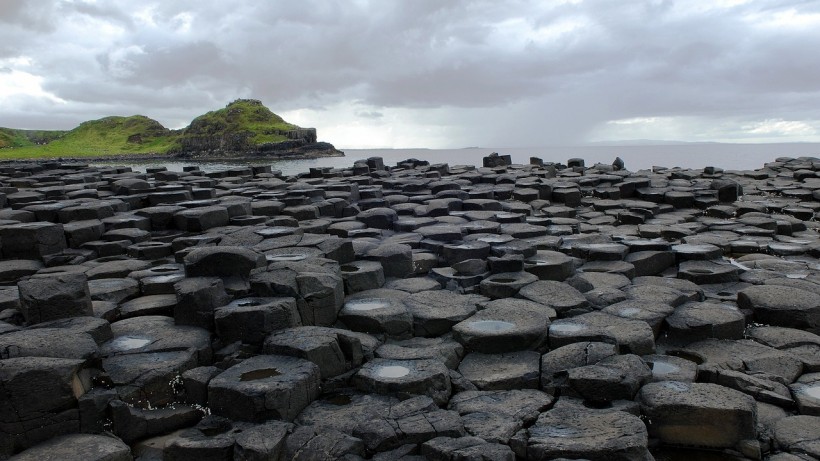Mike Simms, curator of natural sciences at National Museums, has put forward the first new theory since 1940 about the formation of Giant's Causeway. Take note that it is not built by a mythical theory instead by scientific explanations.

Ireland Giant Causeway Stone
Original Theory on Giant Causeway Formation
According to Daily Mail, Northern Ireland's shoreline is covered by the Giant's Causeway for around four miles. The tourist destination is made up of about 40,000 stone pillars, each of which has five to seven sides. It was created during the Paleogene Period, which is 50 to 60 million years ago. It was included in the UNESCO World Heritage List in 1986.
Its formation is explained by the widely accepted scientific theory that lava ponded deeper than usual in a river valley. These symmetrical columns were created as the thick layer of molten lava hardened and cooled.
Based on the report in Smithsonian Magazine, the previous study conducted in 2018 by researchers from the University of Liverpool even managed to replicate the widely recognized mechanism in the lab using basalt cores extracted from the Icelandic volcano Eyjafjallajökull.
Simms' Theory of Giant Causeway Formation
Simms thought about the unique geological features that are only present at sea level. He has given reasons why he thinks they were brought about by a quick event that lasted for days, rather than something that took thousands of years as was once imagined.
He has proposed the hypothesis that this lava-filled hollow, if it were a valley, would have sliced through older layers of lava beneath it. He has discovered older layers of lava on either side of the Giant's Causeway that slope inward and where older layers have not been washed away by erosion.
He said, "An analogy I find helpful when explaining this involves cake." He went on to compare the erosion of a river valley to chopping through a layer of cake to expose layers beneath the top.
Based on his interpretation, what they actually see are older rock layers that slope towards the Causeway, more resembling a cake that was poorly baked and had a hole in the middle. He thought that as the lava rose and exploded at the surface, the ground would sink. The depression was filled with lava, which created the ideal environment for the columns to grow. This process probably only took a few days, as opposed to the hundreds of years that erosion would require to form a river valley.
ALSO READ: Ireland to Plant Over 400 Million Trees By 2040
A Question that Triggered Curiosity on a New Theory
Despite his thorough research, the geologist claimed he had not intended to investigate the Giant's Causeway, according to the Belfast Telegraph. He claimed that he had no plans to conduct any research into the Causeway's history because he believed there was not much more to learn.
He said that a question, "Is a few hundred thousand years long enough to erode a valley this big?" That query caused him to reconsider. It helped him see the evidence that was standing in front of him.
Giant's Causeway and Carrick-a-Rede general manager Max Bryant reportedly told RTÉ that new discoveries can always be made.
RELATED ARTICLE: Arctic Walrus Sleeping on Iceberg Wakes Up in Ireland, Proves Continental Drift Theory?
Check out more news and information on Environment in Science Times.














